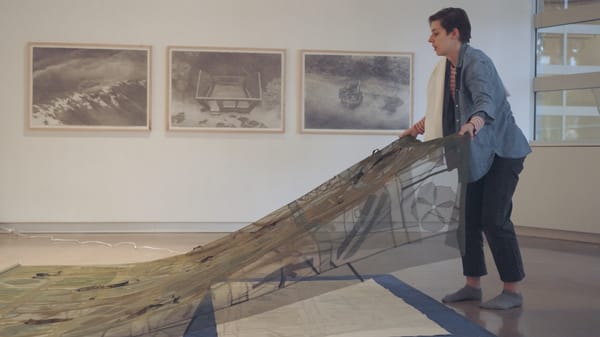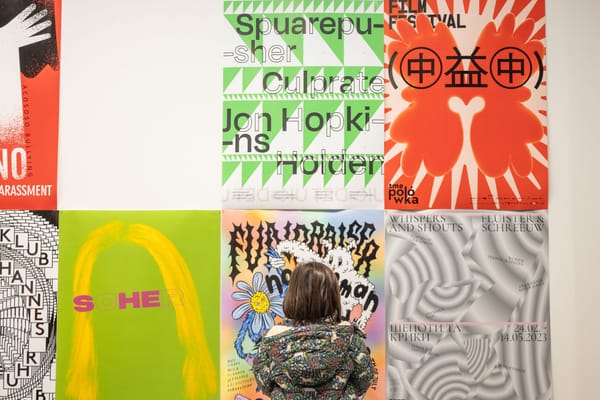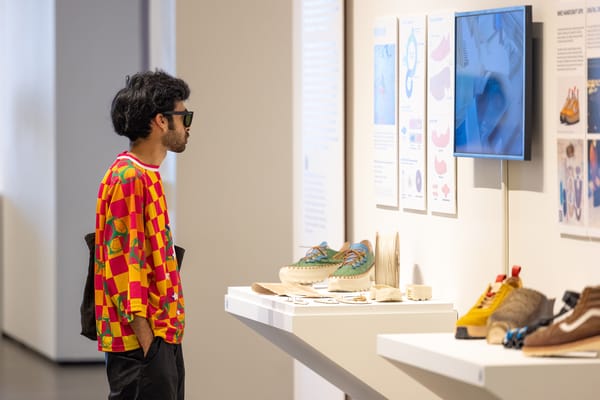Laughter and Tears in Hunter College’s MFA Thesis Show
Many of the works by the graduating class of Hunter College's MFA program fall, broadly speaking, into one of two categories: darkly political, or irreverently funny.

It’s especially difficult to stamp the graduating class of Hunter College’s MFA cohort with a single moniker or style. The students have assembled a rich 2018 thesis show featuring work by a diverse cross-section of artists, many of whose artworks go down one of two thematic paths: humor or politics.
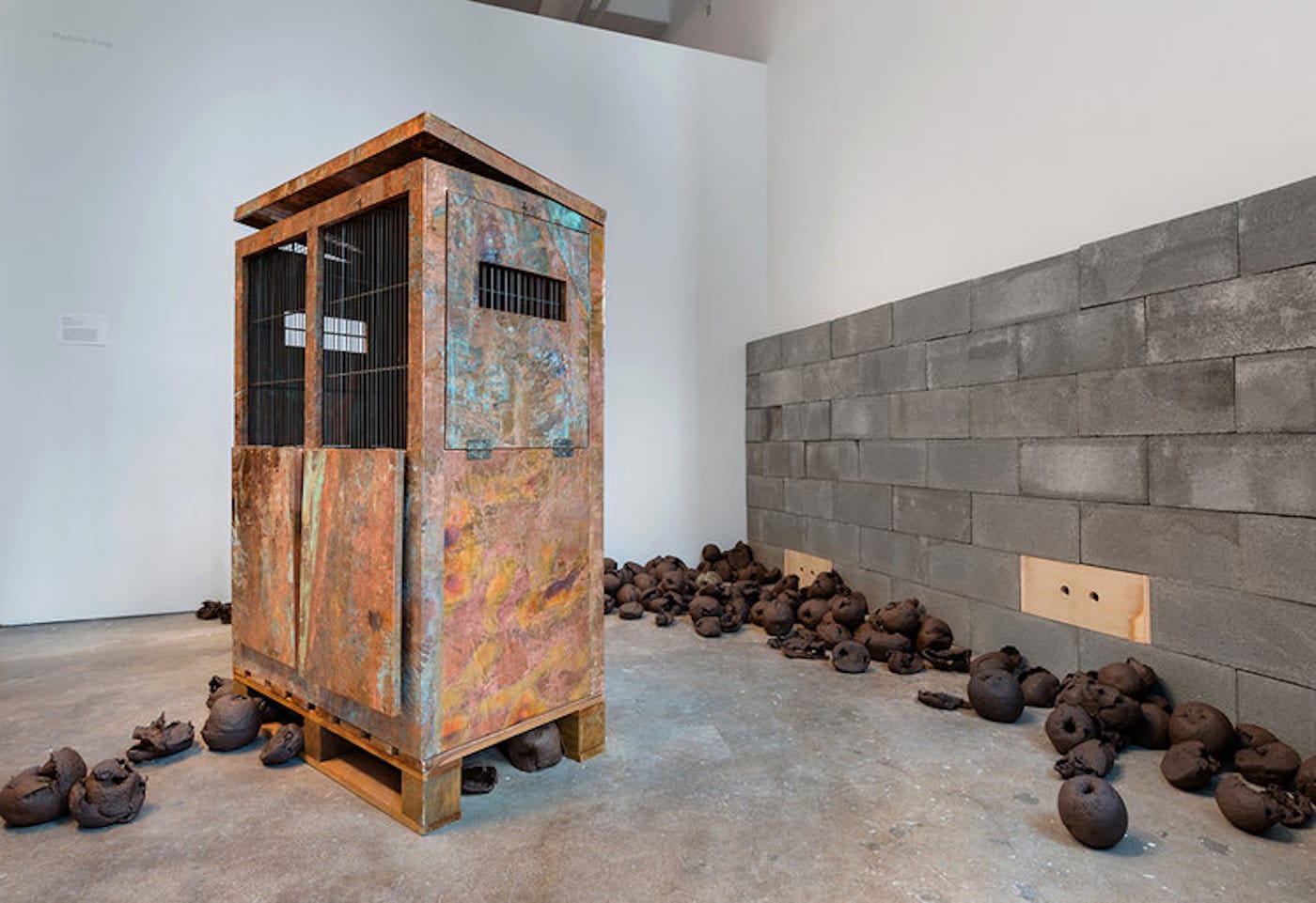

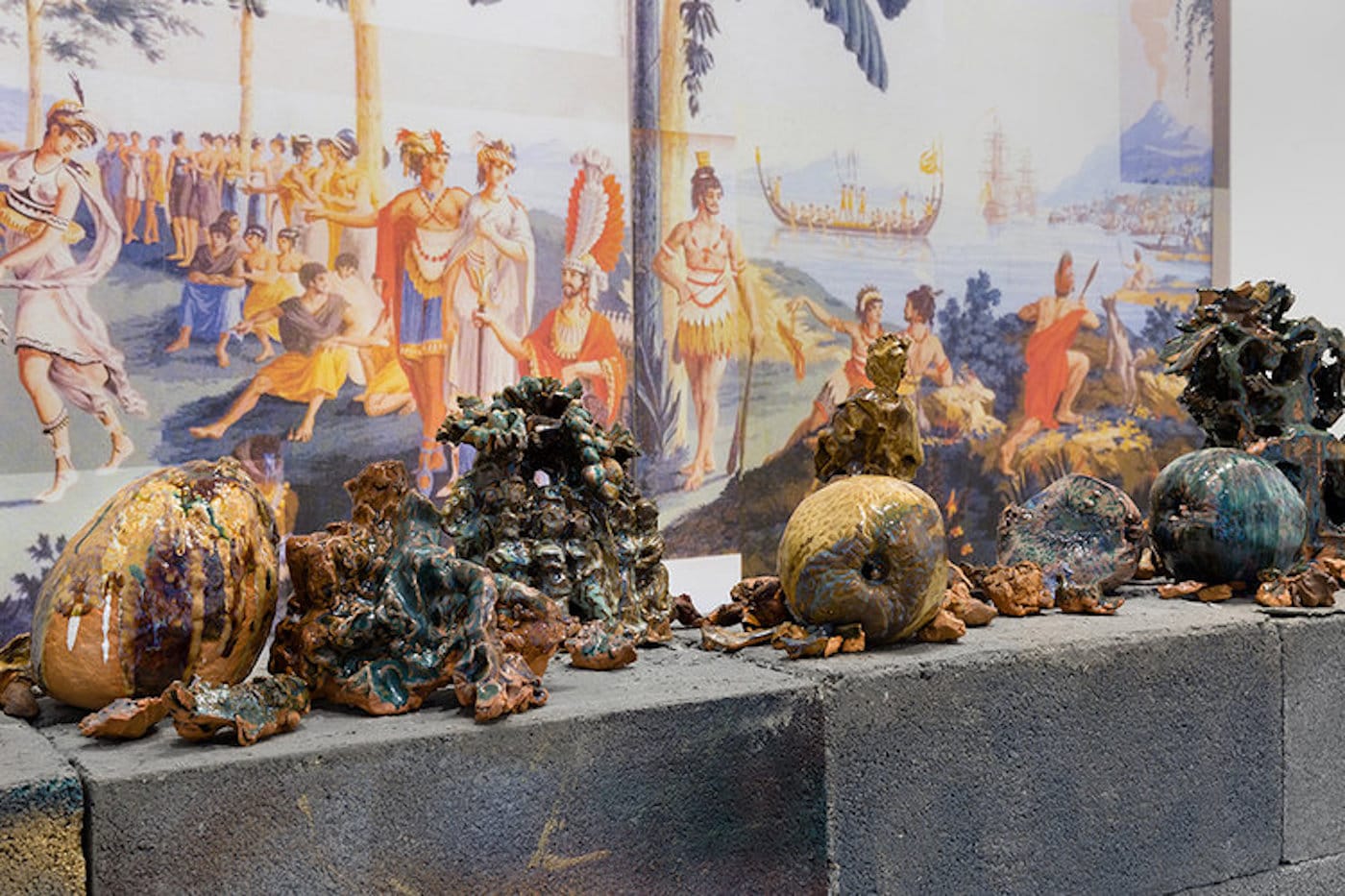
Similar to this year’s MFA show at Columbia University, installation is all the rage among Hunter students. For the first part of Hunter’s MFA show in April, Rachelle Dang even exhibited “Les Sauvages de la mer Pacifique, 1806” (2016/2018), which was previously shown at this year’s Spring Break. For her thesis, Dang expanded upon the original concept through the inclusion of “Botanical Cage and Perimeter Wall” (2018). Alongside her haunting cage-cabinet hybrid, Dang also included dozens of ceramic breadfruits scattered across the floor. Broadly, this work is about the ecological legacy of colonialism in the Caribbean as an implicit form of violence. After all, breadfruits originated in the South Pacific and only found their way to Jamaica via English imperialists looking to replace their failing sugar crop.

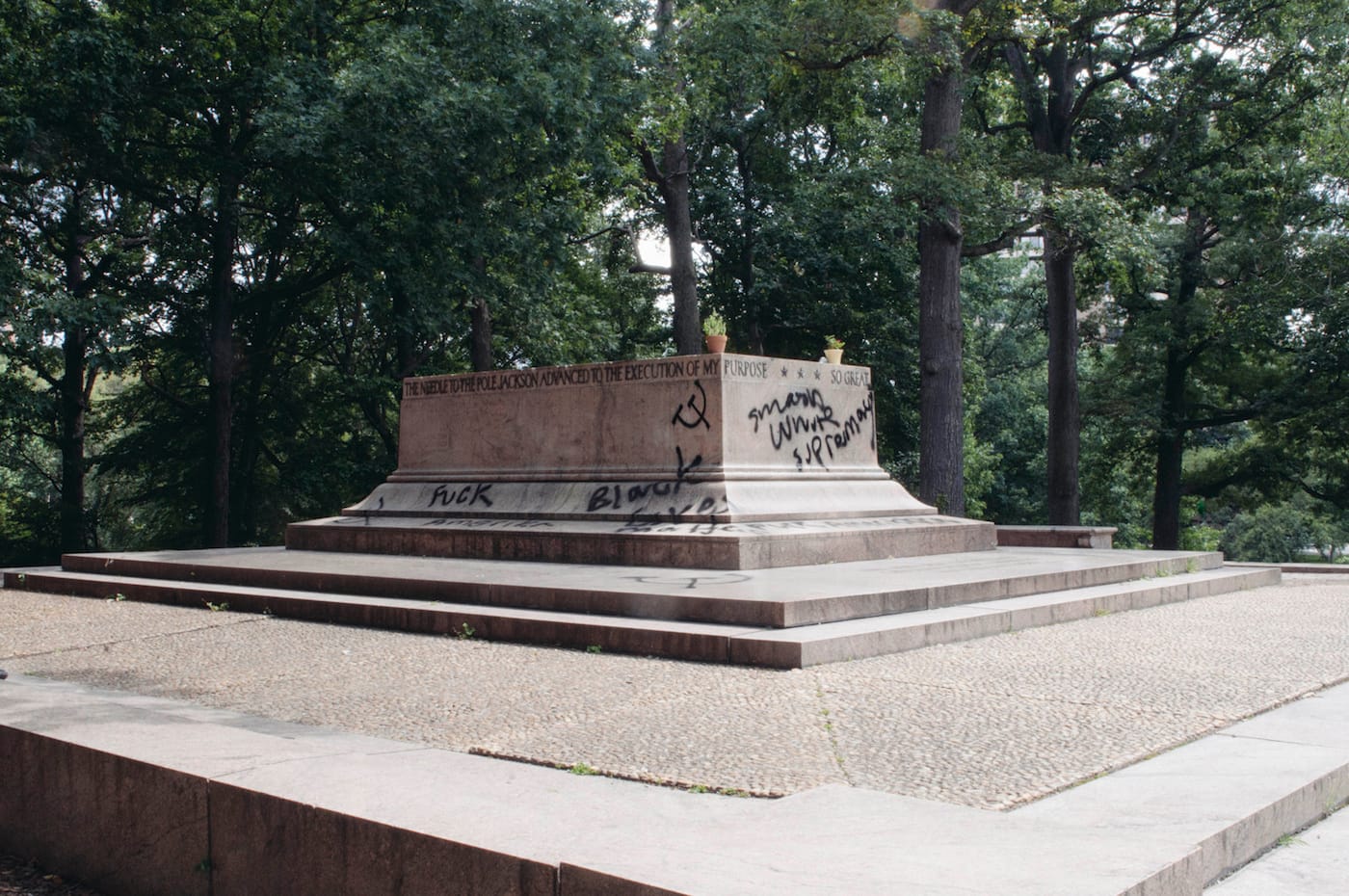
Having served more than 10 years in the US Army as a Press Officer with posts in Iraq, El Salvador, and Poland, photographer Hector Rene also has an eye for the politically profuse. His series, After Ozymandias (2018), predominantly documents the empty plinths left behind after the removal of Confederate statues and monuments around the country. In “For Harriet Tubman” (2018), Rene visits the former site of Baltimore’s Robert E. Lee and Thomas J. “Stonewall” Jackson Monument. Once displaying the two Southern generals on horseback, nothing remains except its plinth graffitied with messages like “Black Lives Matter” and “Smash White Supremacy.” Rene makes evident the dynamic between memorialization and contested public space, capturing the long-awaited crumbling of Confederate ideology so many years after the Civil War.

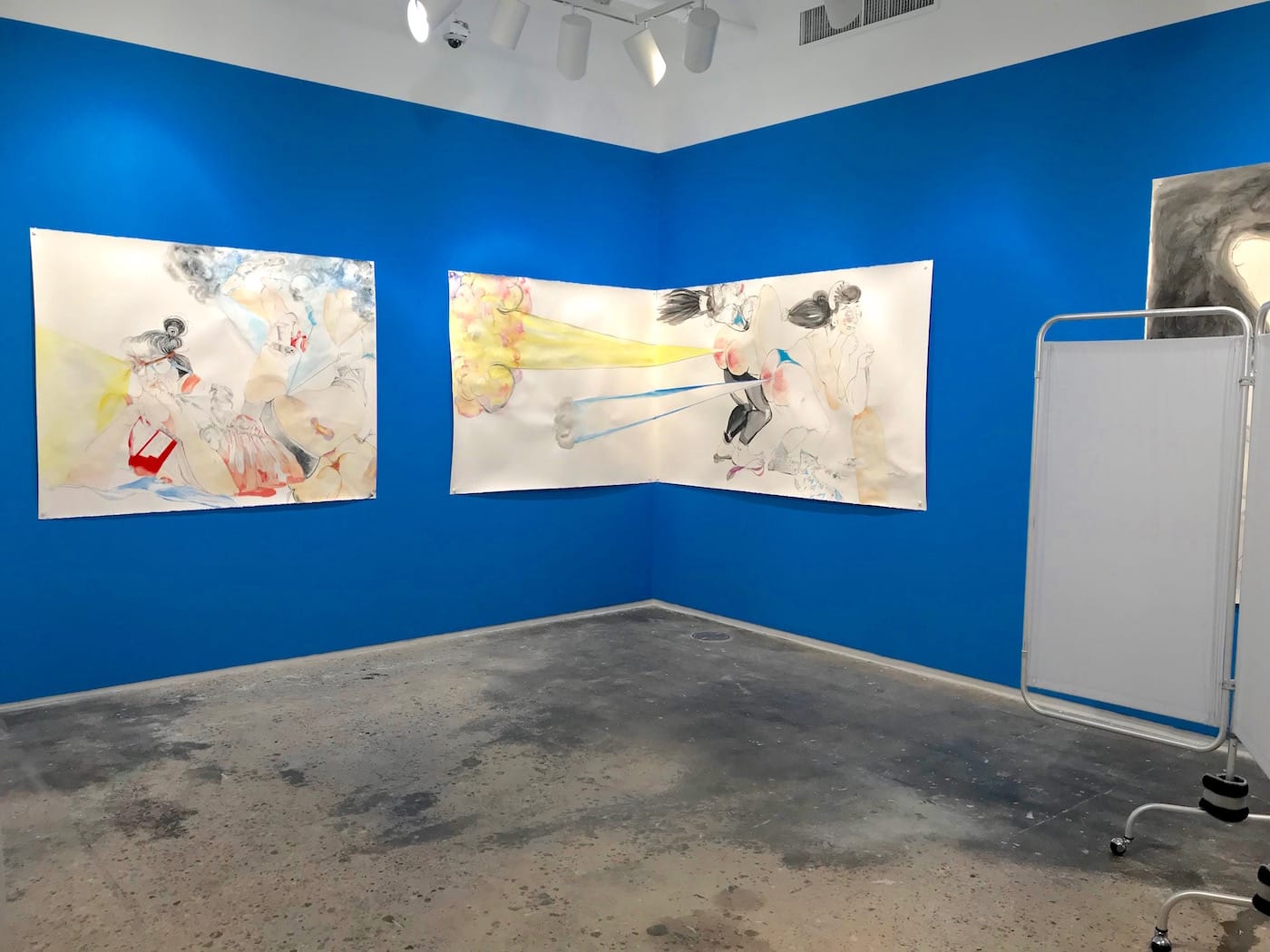
For something completely different, see Sarah Creagan’s work currently on view in the MFA exhibition’s second part. Never have I seen such a nonchalant image of a woman passing gas. With their brightly colored noxious fumes, Creagan’s watercolor drawings remind me of that thermal fart gif. They also evoke the freehand sensibility of Egon Schiele, if the Austrian artist had spent less time chasing women around Vienna and more time listening to them. The artist makes a clear effort to restore women’s agency in erotic art, while infusing her own special brand of self-deprecative humor. For example, “Reading Light // Sara Jones Gets Laid (Up)” (2018) portrays a woman splayed across the ground reading the titular, fictitious book, “Sarah Jones Gets Laid” as blue gas expels from her nether regions. Creagan puts the color red to good use, allowing it to symbolize the erogenous zones of the human body via a nip-slip behind the book and an ambiguous depiction of genitals in the painting’s righthand corner.

Nearby is Paola Di Tolla’s equally humorous video installation, “Fantasy House” (2018), which draws upon people’s often unrealistic expectations of architecture. For her thesis, Di Tolla finds an excellent middle ground between the political and pithy, synthesizing this exhibition’s dominant themes. After asking four people to describe their fantasy houses, the artist gave the transcripts to two architects, who created renderings based on their desires. Next, these transcripts were converted into dialogue for two actors. The end result is Di Tolla’s hilarious two-channel video installation, which sticks actors Beth Griffith and Sandra Kingsbury in an inflatable dingy without a paddle. But they have snacks! One of the actors gnaws on a banana as she tries to comprehend her unrealistic, obviously unattainable dream house. The piece epitomizes the pointed politics and humor that make Hunter’s 2018 MFA thesis exhibition so strong.
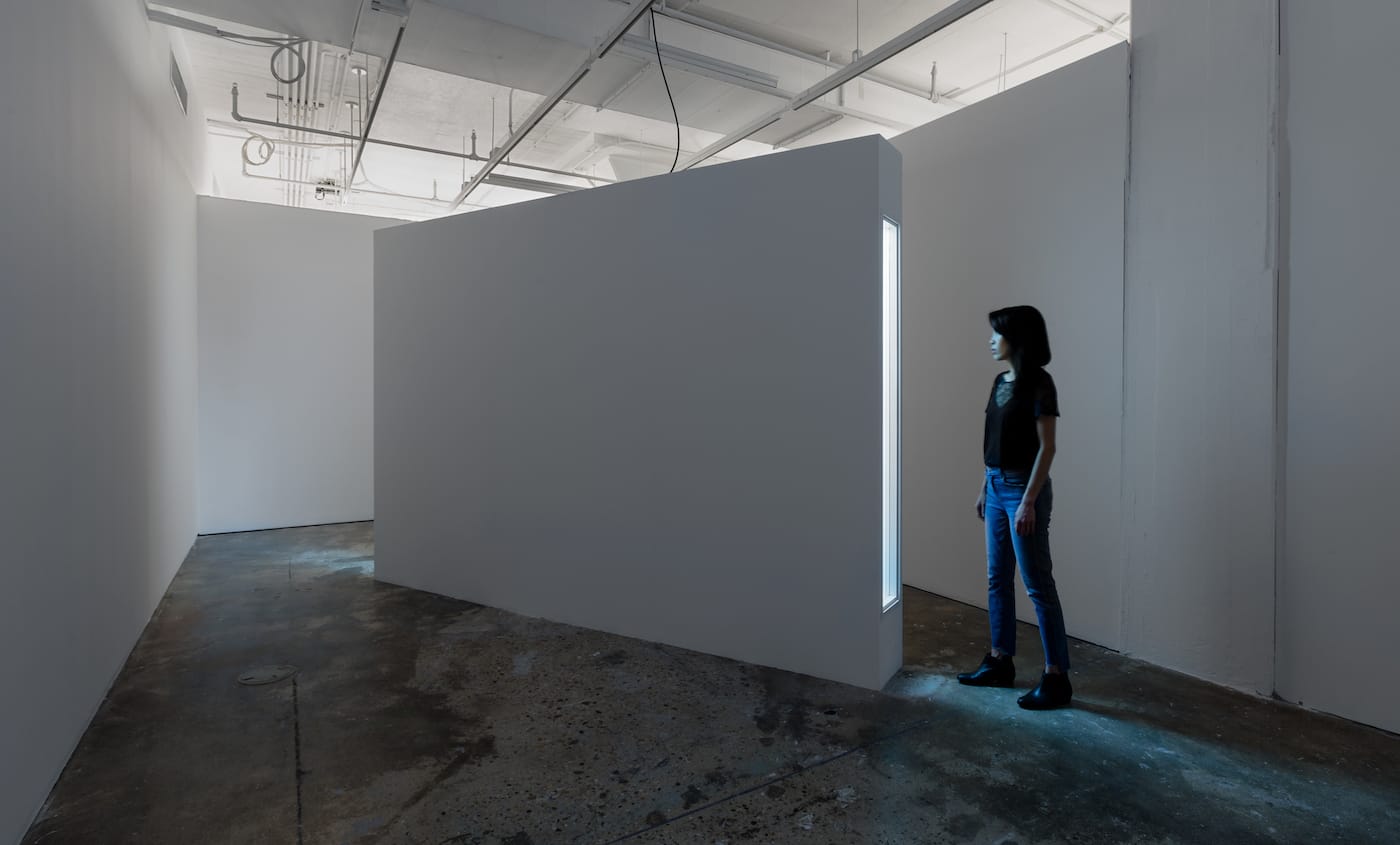
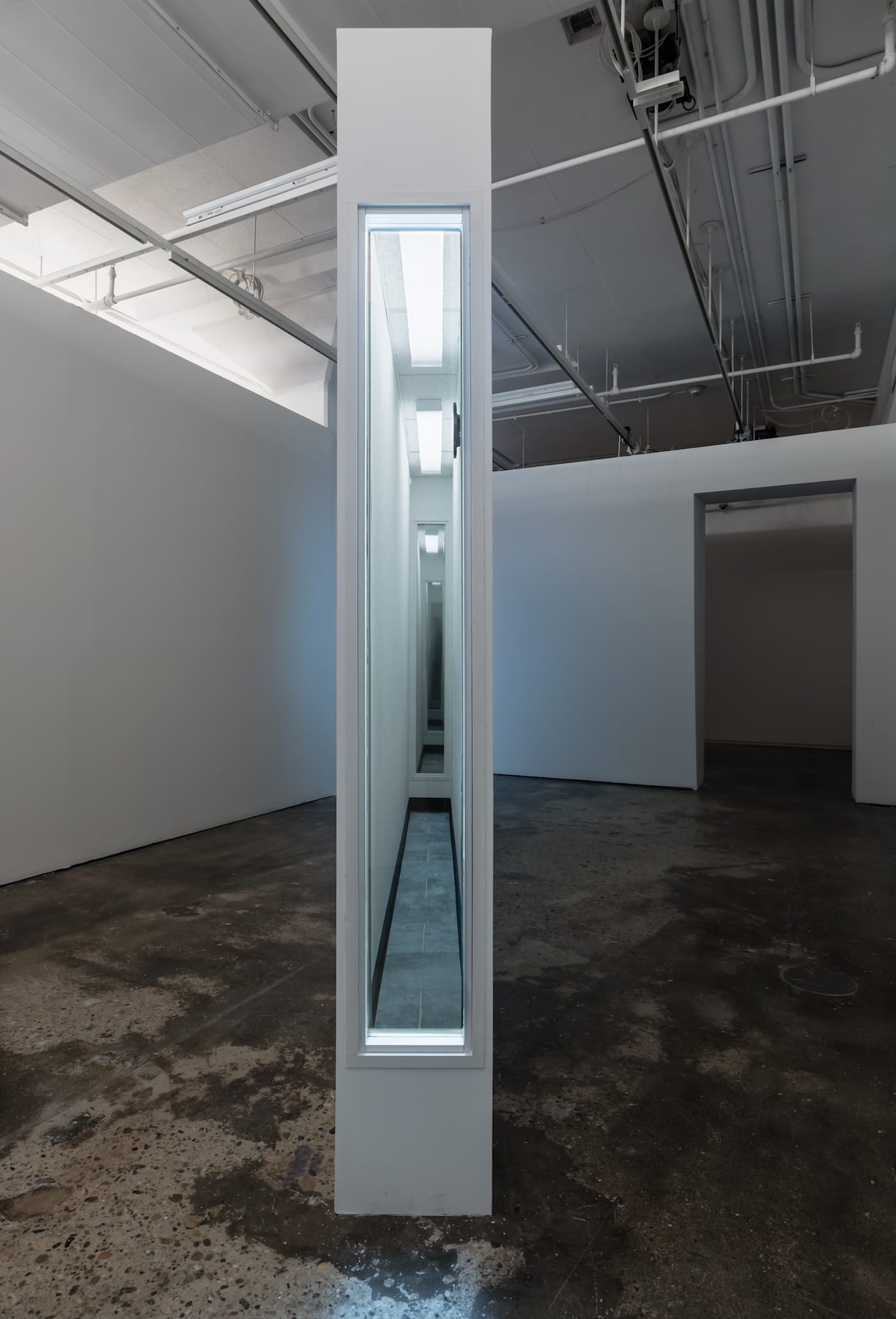
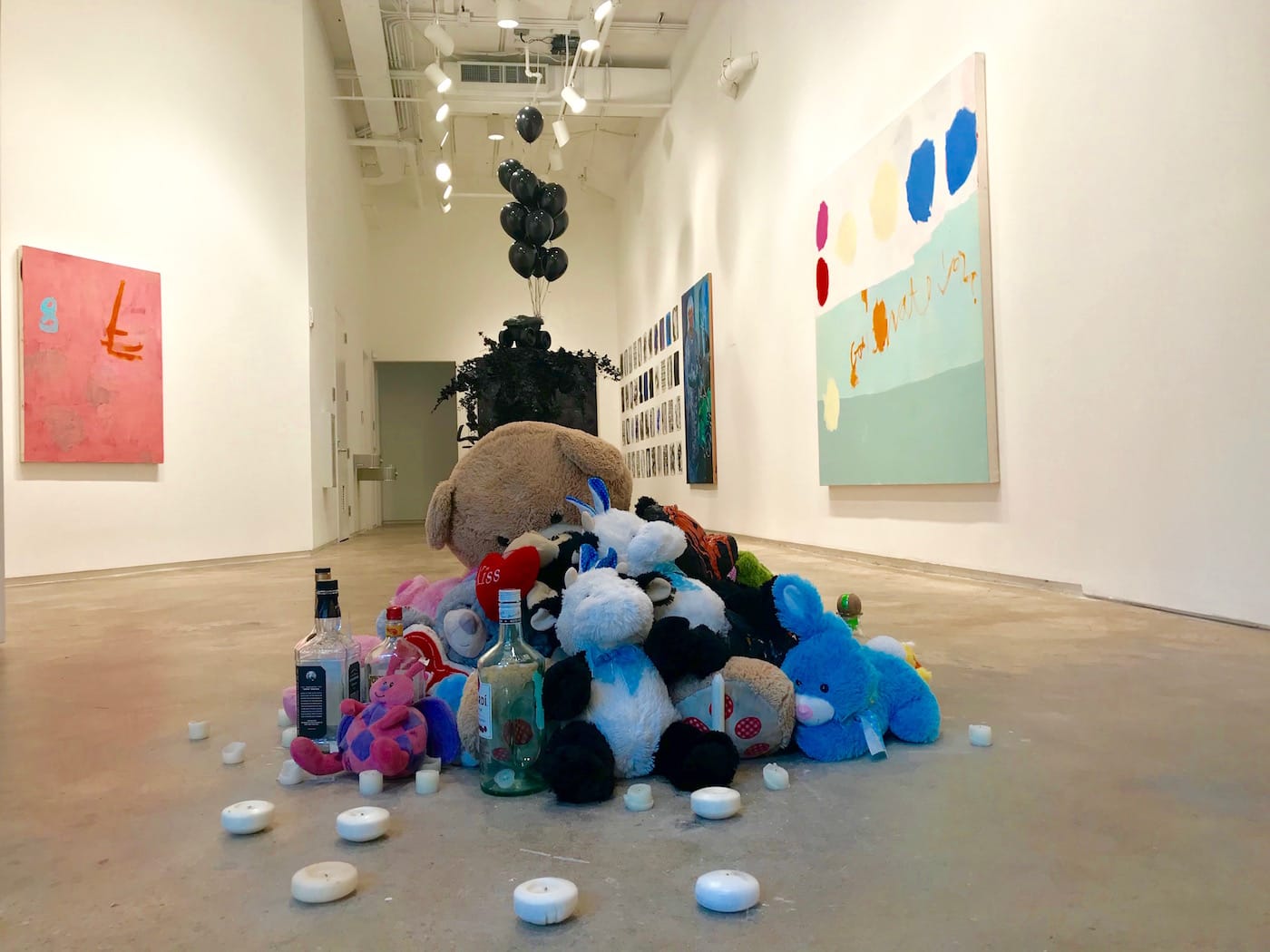
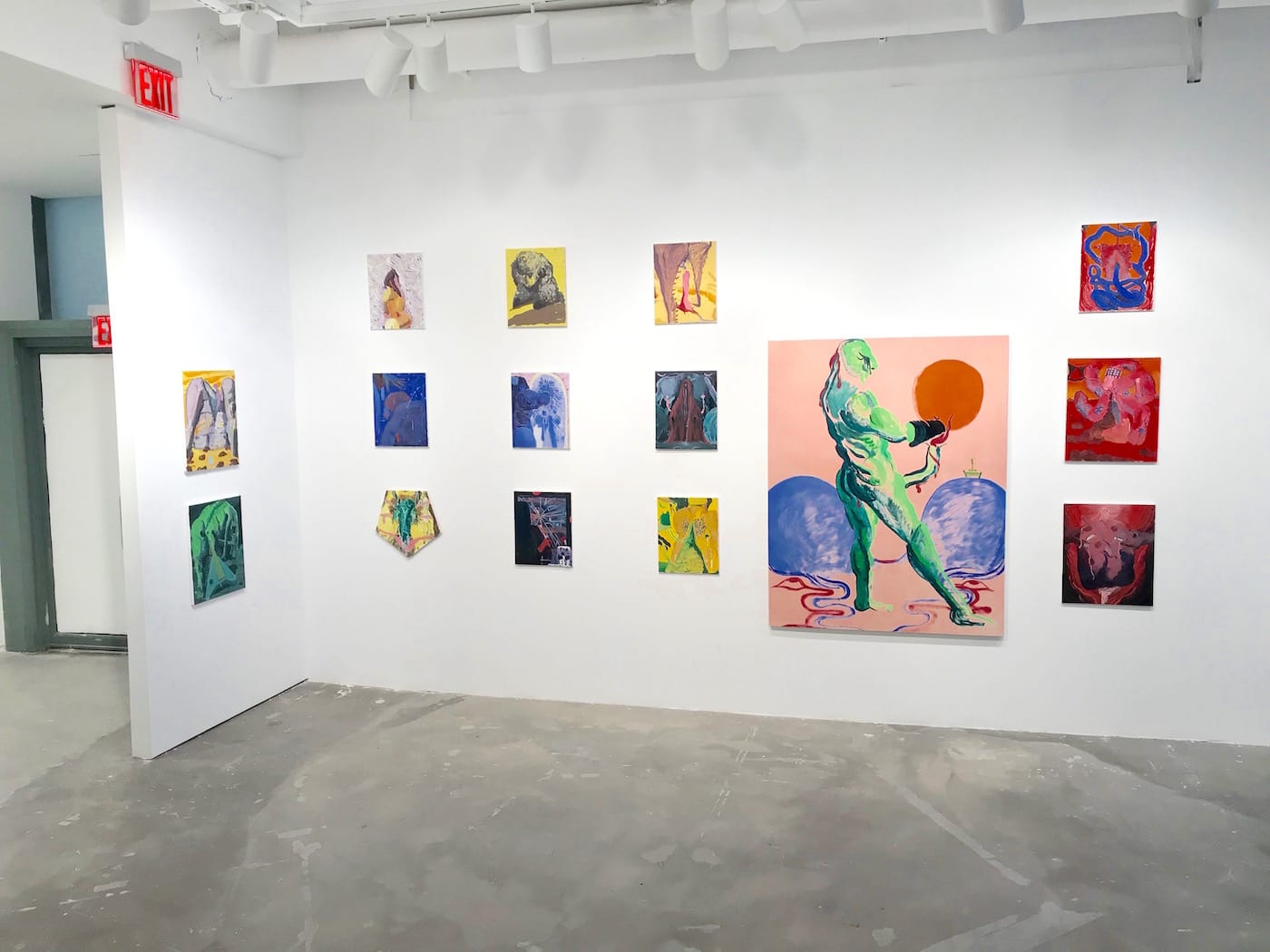
Part two of the Hunter College MFA program’s 2018 spring thesis show continues at 205 Hudson Street (Tribeca, Manhattan) through June 2.


